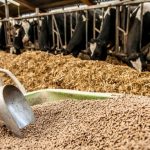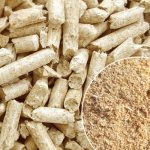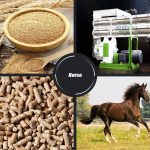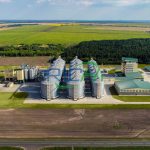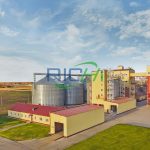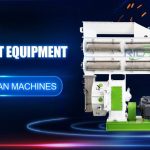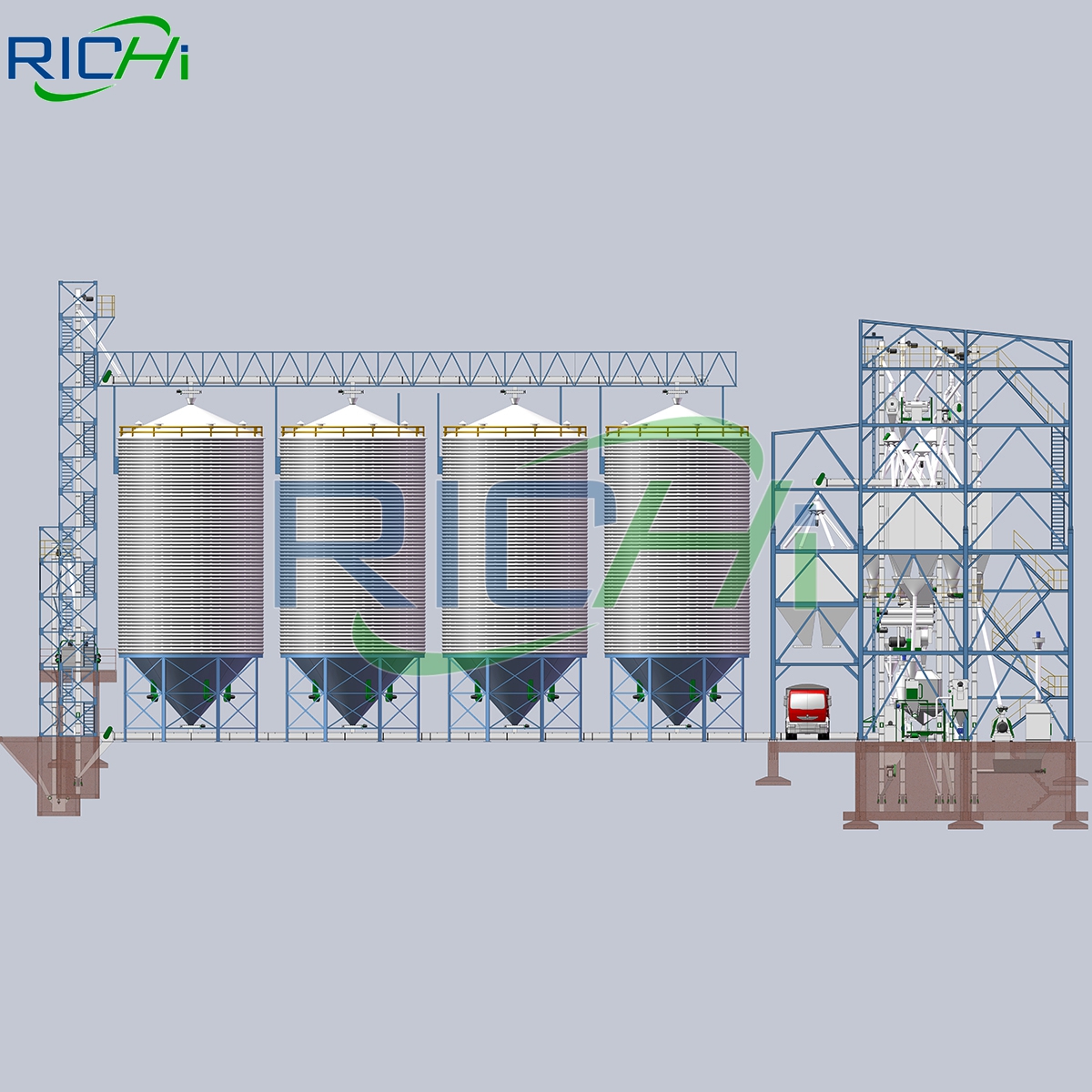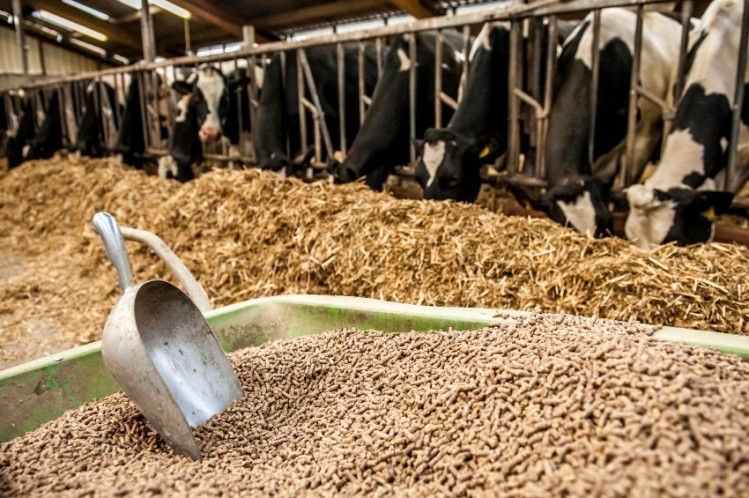Animal feed mill equipment as the most equipment in the feed pellet production, if want to production the best feed pellet , must to know what affects pellet hardness in animal feed mill equipment for sale?
Throughout the whole process of animal feed mill equipment for sale, in addition to the feed formula, the process that affects the hardness of the pellets of pellet feed are: the crushing process of raw materials, the puffing and expansion process of raw materials, the mixing of raw materials, water, oil spraying process, the steam pre-conditioning process, the selection of the ring die in the pelleting process, the post-ripening, post-spraying process and the drying and cooling process.
- Effect of crushing process on pellet hardness
The decisive factor for the hardness of the pellets in the crushing process is the size of the crushed raw material. The impact of crushing particle size on the hardness of the granule is indirectly through the tempering process and granulation process. In actual production, according to the production performance of different animals and the size of the ring die aperture, crushing size requirements to make appropriate adjustments. In poultry feeds generally require pellets of granular feed to be hard, low pulverization rate, which is reducing the waste of feed.

Generally speaking, in the process of the chicken feed manufacturing plant, the finer the crushing size of the raw material, the easier the starch paste in the tempering process, the stronger the bonding effect in the granule material, the greater the hardness of pellets.
- The influence of the puffing process of the material on the hardness of the pellets
Through the puffing process of raw materials, it can destroy the anti-nutritional factors in raw materials, remove the toxins in raw materials, kill bacteria and eliminate harmful substances. The protein in the raw material is denatured and the starch is fully pasted. The effect of paste starch on the hardness of the granule is significant.
At present, puffed raw materials are mainly used in the production of high-grade suckling pig and special aquatic materials. For special aquatic materials, the raw materials through the puffing, starch paste degree increased, the hardness of the formed particles also increased, which is conducive to improving the stability of the particles in water. In the animal feed mill equipment for sale, through puffing, the starch is easier to pasted, which can improve the hardness of pellets.
- The influence of mixing of raw materials, water addition and oil spraying process on the hardness of pellets
The mixing of raw materials can improve the uniformity of various particle size components, which is conducive to maintaining the basic consistency of pellet hardness and improving product quality. The process of adding water in the mixer is still an issue being actively explored. In the production of hard pellet feed, the addition of 1-2% water in the mixer is conducive to improving the stability and hardness of the pellets.
However, due to the increase of moisture, it brings negative effect to the drying and cooling of the pellets. It is also unfavorable to the storage of the product. High moisture material after forming the pellet, the particle hardness is small, the particle wet and soft, good palatability, can improve the production performance of livestock and poultry. In large breeding enterprises can use this wet pellet feed. Wet pellets generally can not be stored, generally require that the production that feeding.
Adding grease in the mixing process is a common process of adding grease in the feed production plant. Adding 1-2% grease can not significantly reduce the hardness of the pellet, adding 3-4% grease can significantly reduce the hardness of the pellet. In the animal feed mill equipment for sale, fully mixing raw material, adding appropriate water and grease can improve the hardness of the pellets.
- The effect of steam tempering process on the hardness of pellets
Steam tempering is a key process in pellet feed processing, and the tempering effect directly affects the internal structure and appearance quality of pellets. Steam quality and tempering time are two important factors that affect the tempering effect. High-quality and dry saturated steam can provide more heat to raise the temperature of the material, so that the starch paste, the longer the tempering time the higher the degree of starch paste, the more dense the structure of the formed pellets, the better the stability, and the greater the hardness.
For general livestock and poultry, the tempering temperature is kept at 70-80℃ by adjusting the amount of steam added, and the tempering time is controlled by changing the length of the conditioner, the angle of the paddle and the rotational speed to about 30 seconds. For fish materials, generally adopt double or multi-layer jacket tempering to improve the tempering temperature and extend the tempering time. It is more conducive to improve the stability of fish particles in the water, and the hardness of the particles also increases accordingly.
Steam tempering is a key process in the feed pellet machine for sale. High-quality and dry saturated steam and longer tempering process can improve the hardness of the pellets.
- The influence of the ring die on the hardness of the pellets
Pelletizer ring die aperture and compression ratio and other technical parameters can significantly affect the hardness of the pellets. The length of the pellet has an obvious influence on the compression capacity of the pellet. For the same diameter pellet, the longer the length of the pellet, the greater the measured hardness if there is no defect in the pellet.
Adjusting the position of the cutter and maintaining the proper particle length can keep the hardness of the particles basically the same. The shape of the particle diameter cross-section also has a certain influence on the particle hardness. The 8-shaped cross-section has a stronger pressure-bearing capacity than the round cross-section, and the measured hardness value is also larger.
In addition, the material of the ring die also has a certain influence on the appearance quality and hardness of the pellets. There is a significant difference between the pellets produced by ordinary steel ring die and stainless steel ring die. Using the same aperture but different compression ratio of the ring die, the hardness of the pellets with the increase of compression ratio significantly increased. Selecting a suitable compression ratio ring die can produce pellets of suitable hardness.
- The effect of drying and cooling process on the hardness of pellets
In order to prolong the storage time of feed products and ensure the quality of products within a certain period of time, the feed pellets need to undergo the necessary drying and cooling processes. In the test to determine the hardness of the pellets, the hardness of the pellets was measured by cooling the same product for 5, 10 and 15 minutes respectively, and it was found that the hardness of the pellets with low hardness was not significantly affected by the cooling time, while the hardness of the pellets with higher hardness decreased with longer cooling time. This may be due to the fact that the brittleness of the granules increases as the water inside the granules is dissipated, which affects the granule hardness.
In the animal feed mill equipment for sale, the factors affecting the hardness of the pellets are far more than these. As more and more scientific and technical workers who are enthusiastic about feed processing technology research, more and more methods to regulate the hardness of the pellets are mastered.
Welcome to visit richi machinery.

